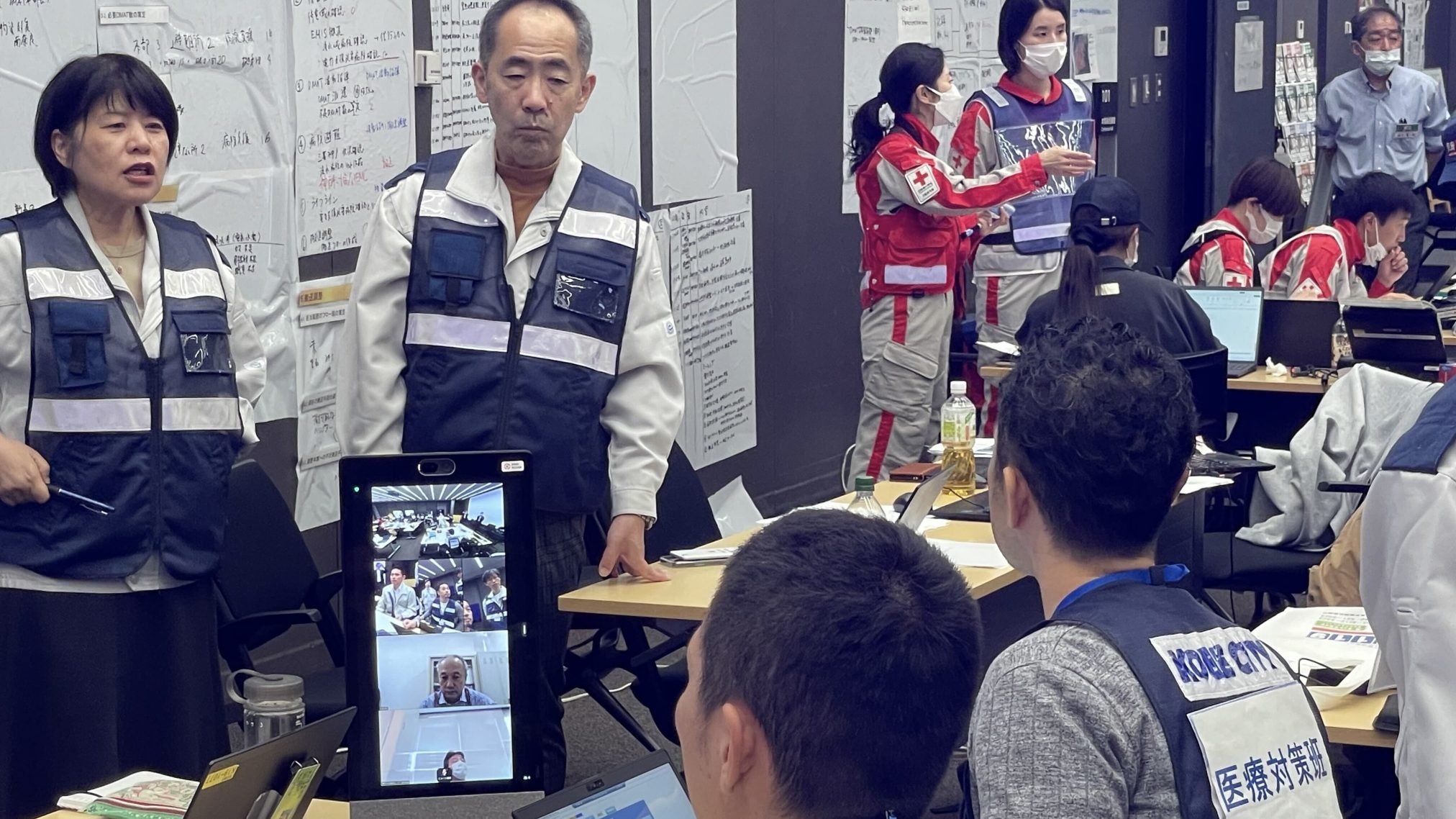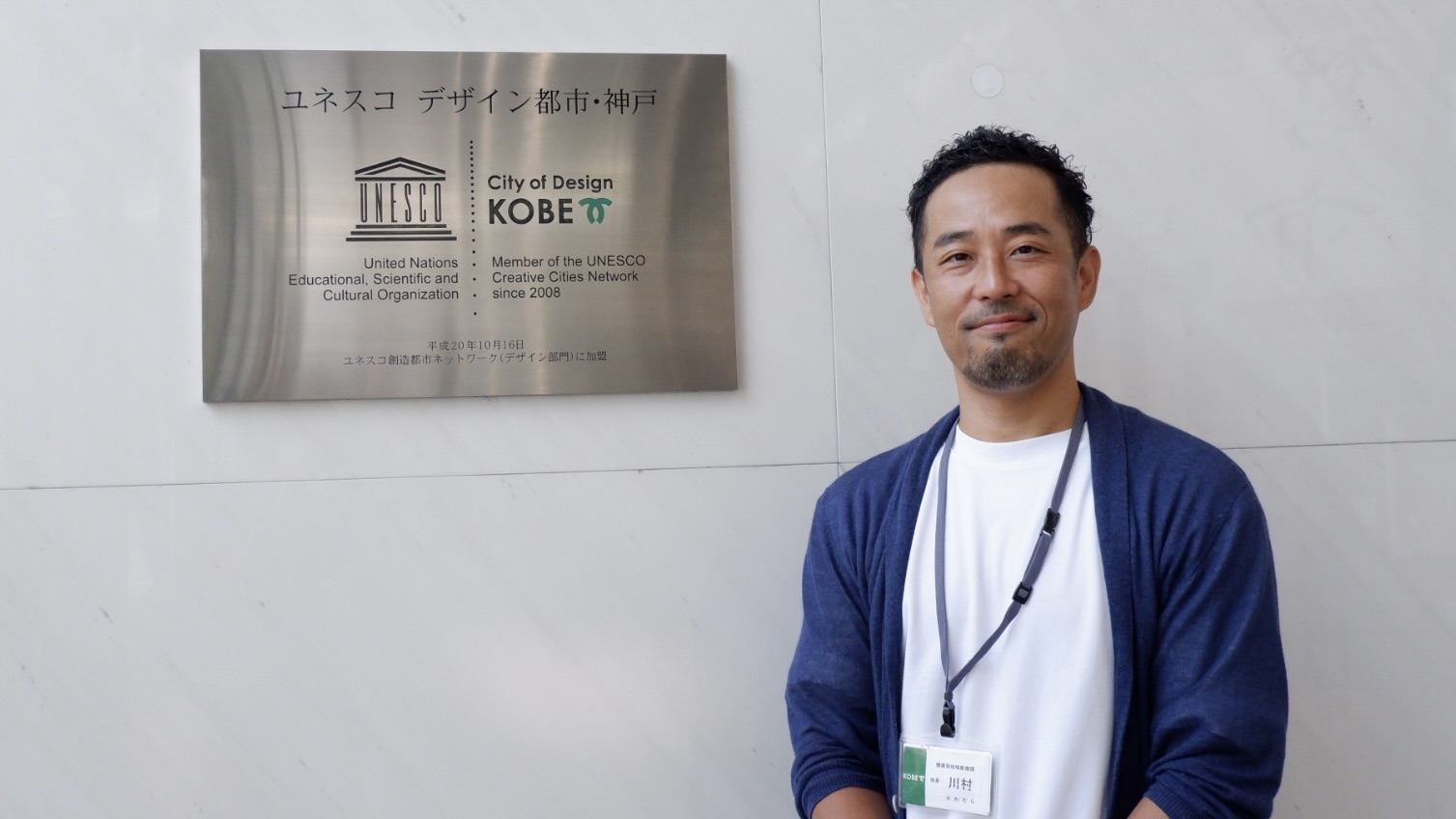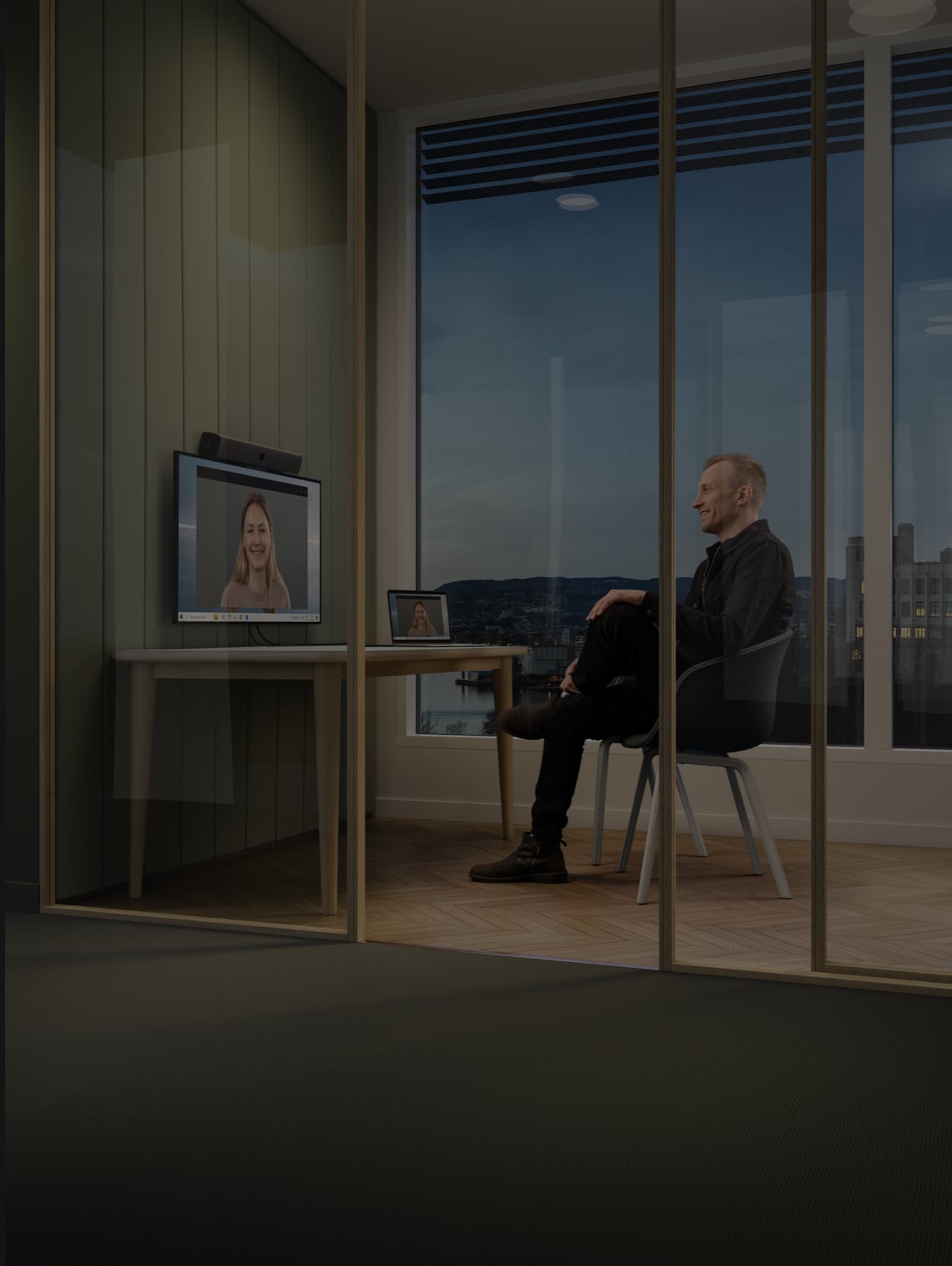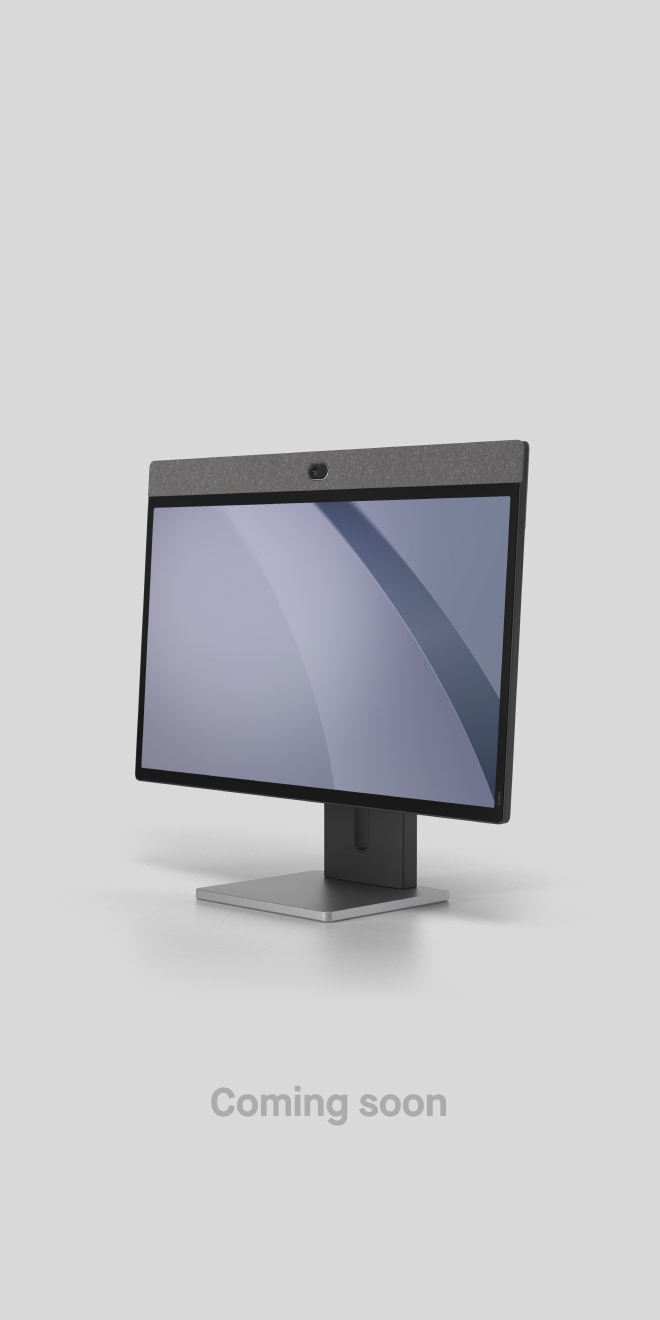How Neat Is Helping Kobe City Emergency Services Save Lives
Simon Anthony Walker, Sep 5, 2024

Kobe City in Osaka Bay, central Japan, was hit by a magnitude 7.3 earthquake in 1995. Now, its emergency services use Neat devices to share information and strengthen its medical response systems for similar large-scale disasters.
Japan is prone to natural disasters. Hence, many of its cities are on high alert for earthquakes, floods, and tsunamis. Kobe City in Osaka Bay, central Japan, is no exception. To learn from past events and experiences, including the devastating Great Hanshin-Awaji Earthquake in 1995, Kobe City has enhanced its disaster preparedness by integrating new technologies and tools, including our pioneering Neat Bar and Neat Frame video devices.
As Kobe City approaches the 30th anniversary of the Great Hanshin-Awaji Earthquake, its health bureau has significantly revised the “Emergency Medical Manual for Disasters” established in 2014 to strengthen the city’s disaster response capabilities.
Over the past ten years, they’ve expanded the manual to support high-performance online information sharing and satellite communication devices for designated disaster response hospitals, adding five hospitals to the six already selected in 2015 under the “Hyogo Prefecture Regional Disaster Prevention Plan.” The plan ensures that each administrative district has at least one designated hospital, bringing the total to 11.
Reassessing the roles of disaster response hospitals
The health bureau also reassessed the roles of these disaster response hospitals to strengthen patient intake capacity. In addition to enhancing budget allocations for managing medical supplies and pharmaceuticals within hospitals, they extended support to cover costs associated with emergency power fuel and communication equipment. Moreover, they established a broad medical care area system to enable mutual support based on the extent of damage, dividing the city into four areas.
Kobe City’s health bureau further adapted the “Emergency Medical Manual for Disasters” thanks to the widespread adoption of video meetings in the medical field during the COVID-19 pandemic. Whereas previously, key personnel had to gather at Kobe City’s disaster response headquarters during emergencies, they can now share information online.
During the pandemic, video meetings quickly became the norm nationwide as a means to avoid in-person contact. In medical settings, including hospitals, video meetings became standard, leading to more active information sharing online.
Shota Kawamura, Section Chief, Regional Medical Care Division, Kobe City

Medical coordination meetings during disasters
Since most hospitals in Kobe City used Zoom for video meetings, in 2024, it signed an agreement with ZVC JAPAN, the operator of Zoom Video Communications, to collaborate on using video meetings for medical coordination during disasters. This agreement promises technical support to establish a system that enables disaster response hospitals to create an environment where they can effectively use Zoom for video meetings during emergencies.
As a robust countermeasure for online information sharing during emergencies, Kobe City is also moving forward by introducing “Starlink,” a satellite communication system that can maintain connectivity even when disasters disrupt internet services. Starlink, a communication service utilizing 5,000 to 6,000 satellites orbiting just above the Earth at around 550 kilometers, offers low-latency communication, ensuring smooth video meetings. Discussions are ongoing for its introduction to disaster response hospitals within the current fiscal year.
Enhancing emergency medical care with Neat devices
Along with the plan to use Zoom for video communication between disaster response hospitals, Kobe City started deploying Neat devices to these hospitals. Shota Kawamura recalled his first Neat device experience in the summer of 2023, presented by a representative from ZVC JAPAN:
I was amazed at how much a video communication device could change the experience. As we started to recognize the need for high-performance video communication devices, beyond just budget enhancements, for expanding support to disaster response hospitals, we saw this as a tool that could be used effectively, even in emergencies.
Shota Kawamura, Section Chief, Regional Medical Care Division, Kobe City
Kobe City currently uses our devices Neat Bar and Neat Frame. For example, Neat Frames have been deployed at all 11 disaster response hospitals and one municipal hospital to enhance swift information sharing during disasters, making them useful for regular video meetings. In large-scale meetings organized by the city, emergency crews use Neat Bar and Neat Frame together, allowing for a more immersive video communication experience.

Devices with high-performing audio and video features
Kawamura shared his impressions of Neat devices: “I was first impressed by the camera’s image quality and was particularly attracted to the auto-framing feature that tracks and zooms in on the speaker. Later, when we tested the Neat device during a large-scale disaster drill organized by Hyogo Prefecture for the DMAT medical team, which supports disaster-stricken areas, I recognized the camera’s high performance and the crystal-clear audio.
Even in noisy environments like Koby City’s disaster response headquarters, the device effectively captures and transmits only the necessary sounds. It can handle meetings in hectic conditions where you can’t stop the overall activity happening around you. Unlike traditional online meetings, where communication feels one-way, the clear audio and video of Neat devices make interactions feel more natural and face-to-face, positively impacting people’s engagement.
Kawamura particularly appreciates how easy it is to use Neat Frame.
[Neat Frame] is an all-in-one device that people can start simply by plugging in the power cable, and there’s no need to shut it down. You can just unplug the cable and carry it with one hand. In disaster scenarios, as well as in office web meetings, I find the convenience and portability of Neat Frame to be excellent. While you could also consider tablets for portability, the technical superiority of a device specialized for video communication like Neat Frame is evident.
Shota Kawamura, Section Chief, Regional Medical Care Division, Kobe City
Greater potential for online medical support during disasters
Looking ahead, Kawamura suggests creating packages with specific goals, such as medical care, disaster response, or education, including how to use external services like Zoom and satellite communication. Such packages could help municipalities and companies considering adoption visualize their practical applications better. Establishing online information-sharing systems across multiple municipalities could also lead to smoother mutual support for disaster response, particularly in large-scale, wide-area disasters.
Additionally, Kawamura suggested selling the device bundled with a mobile battery set for power outages to help with initial purchase decisions. Kawamura also discussed the potential use of Neat devices in post-disaster life as a part of future disaster medical care:
In evacuation centers during disasters, people typically avoid visiting medical facilities for minor issues. If we could set up a device that allows easy consultation with a doctor in such locations, it would be highly beneficial for evacuees. Setting up such a system would be easier with high-performance cameras and microphones like those in Neat devices. Moreover, in depopulated areas with decreasing medical facilities, placing these devices in public facilities managed by staff would be useful, allowing people to come for appointments and receive consultations at set times.
Shota Kawamura, Section Chief, Regional Medical Care Division, Kobe City

Enabling prompt and accurate life-saving efforts
Having been transferred from the Kobe City Fire Department, where he experienced numerous natural disaster scenes, Kawamura noted that he has adjusted his disaster response plans.
As the 30th anniversary of the Great Hanshin-Awaji Earthquake approaches, fewer staff members have direct experience of that time. By inheriting the experiences of those there and integrating modern technology, Kawamura expressed a strong desire to prepare for the large-scale disasters that may occur in the future. He hopes that using Neat devices in emergencies will lead to prompt and accurate life-saving efforts that were unimaginable back then.
Discover Neat’s pioneering devices or see them in action in our live Virtual Demo – Neat Devices and Experiences. Surpassing that, book a demo and experience them for yourself.







